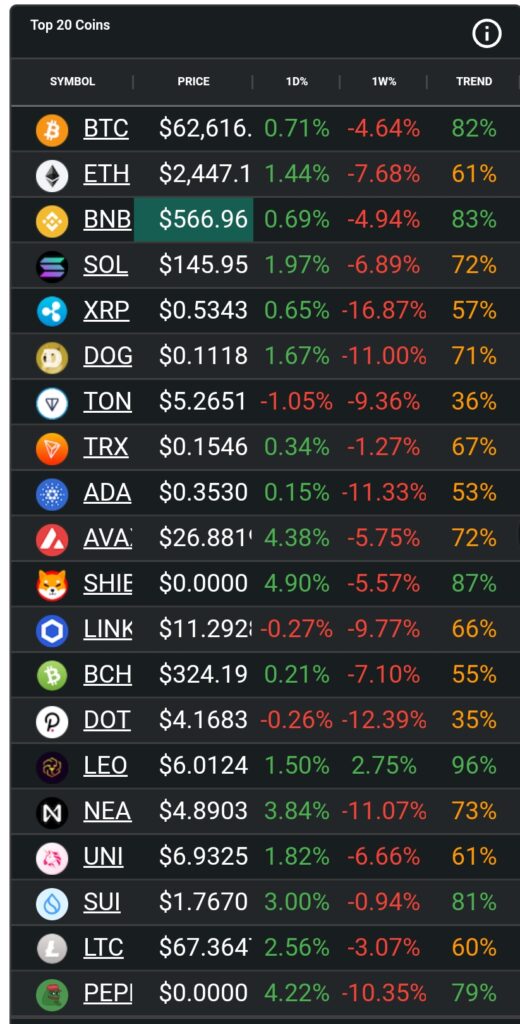Original title: “On the eve of large-scale unlocking, selling coins was packaged as financing, and Celestia was questioned as a “pump and dump””
Original author: Xiyou, ChainCatcher
Recently, Celestia, a modular blockchain that has attracted much attention, has fallen into a crisis of trust. “The $100 million in financing disclosed was actually an over-the-counter OTC currency sale, and was announced during the countdown to large-amount unlocking.” This series of confusing operations put the module Celestia, the leading chemical chain, has been pushed to the forefront.
The community questions Celestia’s behavior. It may be that they are working together with VCs or institutions to take advantage of the opportunity to “pump up the currency price”. A few days before unlocking, the proceeds from OTC currency sales are announced as financing news to create favorable news, and information manipulation is used. Means are used to guide retail investors to take over orders and thereby seek personal gain.
In the eyes of the community, the Celestia Foundation failed to make the necessary transparent disclosures on this over-the-counter transaction and instead packaged it as financing news, which misled investors and triggered a crisis of trust.
However, as of press time, Celestia has not made any response to this controversy.
The countdown to the unlocking of TIA worth US$1 billion, the announcement of “US$100 million in financing” may be positive or suspected of pumping and dumping
On September 24, the Celestia Foundation publicly announced that it had completed US$100 million in financing. This round of financing was led by Bain Capital Crypto, with participation from Synracy Capital, 1kx, Robot Ventures, Placeholder, etc., and wrote that this brought the project’s total raised The amount reached $155 million.
After the good news was released, Celestia’s native token TIA rose in response. The price of the currency surged from US$5.6 to US$6.9 that day, an increase of more than 20%. It has now fallen back to around US$6.5.
However, just as the crypto community was celebrating Celestia’s huge financing, well-known crypto investor Sisyphus revealed on social platforms that the US$100 million in financing announced by Celestia was actually a deal that the foundation reached directly with multiple institutions a few months ago. The financing valuation at that time was US$3.5 billion, and these token shares may be unlocked in October.
Sisyphus also added that if institutions could sell all unlocked assets for $7.50, they would be able to break even.
The real identity of Sisyphus has been revealed by users to be Kevin Pawla, the former head of OpenSea Ventures.

After Sisyphus’s remarks, the originally positive financing news changed. From the community’s perspective, Celestia’s US$100 million in financing was actually the proceeds from OTC currency sales a few months ago, but was packaged as new financing and expired after the unlock. public at the time.
This series of operations has made users in the crypto community angry. The community generally believes that foundations or teams should not disclose OTC OTC transaction proceeds as new financing, nor should they publish fake news about fundraising benefits on the eve of facing a large unlocking. This is suspected of inducing users to buy and pump-and-dump.
According to Token unlock data, more than 175 million TIA tokens will be unlocked in Celestia on October 30, accounting for 17.68% of the total TIA supply and worth approximately US$1.08 billion. This is likely to lead to a sharp increase in TIA market circulation, which in turn triggers short-term price fluctuations. According to past historical data, large-scale token unlocking events tend to exert downward pressure on currency prices.

The over-the-counter transaction that was originally completed several months ago was not released until one month before the token was unlocked. The motivation behind this has to be suspected. The project party or institution wanted to take the opportunity to boost sales. .
In fact, as early as September 7, Sisyphus posted a reminder on his social media that Celestia completed an over-the-counter transaction of US$100 million, and the currency price was approximately US$3.5. The team and investors will unlock $1 billion in funding over the next six months.

However, the content of Sisyphus’s tweet was not noticed by the community and was not unearthed until Celestia officially announced its financing on September 24.
Crypto KOL @Ericonomic posted on social media that if what Sisyphus said is true, Celestia’s US$100 million financing incident may be another game between the project party and VC institutions. A few months ago, when the token price was high, the project party , sold to institutions OTC, and waited until a few days before unlocking to release the so-called financing news, making users think that the financing had just happened. These institutions that bought tokens through OTC transactions are currently very optimistic about the project, and thus follow blindly.
In this regard, community user @minjung has a different view. He believes that Celestia’s trading in the secondary OTC market is not a bad thing. Direct cooperation with venture capital trading institutions will help reduce the impact of unlocking huge tokens. SynracyCapital, 1kx , Robot Ventures and other institutions are likely hedging. If it was indeed obtained in the secondary market, it would be inappropriate for Celestia to announce the transaction as a financing, especially before a major unlock.
Regarding Celestia’s current financing turmoil, the main point of controversy in the community is that the project party should clearly explain the source of financing.
In addition, OTC transactions are common and there is no problem in the process of announcing them before unlocking. However, the project party can publish the funding information in a reasonable and transparent manner, disclose the project valuation and fund ownership, make it clear that this is an over-the-counter transaction proceeds rather than financing, and disclose the relevant information to investors instead of concealing and Misleading means to deceive users.
However, as of September 27, Celestia officials have not made any response to the financing crisis. ChainCatcher has asked the community for official confirmation on whether the financing disclosure is true, but has not received a reply.
Celestia valuation disconnected from revenue?
Celestia’s modular infrastructure designed specifically for data availability networks (DA) can reduce data costs by 99.9% compared to the current industry’s largest DA layer Ethereum mainnet. The project triggered market frenzy with the TIA token airdrop in February this year, and the price soared to more than $21. It was once called a new crypto blue-chip project. As the Layer 2 narrative cooled, the price of TIA also began to fall from its high point, falling to as low as $3.7, with the price shrinking by 80%.
In addition to triggering a crisis of trust in Celestia, this financing turmoil also revealed the common problem of disconnection between valuation and actual income in crypto projects.
Although Celestia is valued at $3.5 billion, its potential annual revenue is only more than $5 million. The valuation is far from the actual situation of its business. This huge gap has triggered a re-examination of the true value of encryption projects.
As early as January this year, reports showed that Celestia’s current data usage rate was 0.1%, and the total cost was significantly lower. Celestia generates about 5 TIA or $65 in fees per day. If Celestia data is fully loaded in the future and the TIA price is calculated at $13, the network can generate about $5.2 million in annual fee revenue, which would be the data currently posted to Ethereum. 65 times.
Blue Fox also posted at that time that although Celestia’s revenue is only a few hundred dollars, its diluted market value is very high, which is almost the same as the diluted market value of L2, a leading company with a mature ecological development and an annual revenue of tens of millions of dollars. TIA The diluted market value is currently about US$19 billion, which is similar to Arbitrum’s diluted market value and exceeds Optimism.
The latest data released by Blockwork on August 6 shows that Celestia DA data space consumption hit a record high in that week, that is, the network utilization rate was 1.5%, accounting for 36% of the DA market share, and Ethereum is still the DA market The protagonist.

The maximum annual revenue of a company valued at billions of dollars is just over $5 million, which illustrates the huge gap between valuation and actual value.
Sisyphus also added in a tweet on September 7 that it is not a good deal to buy a product with a maximum annual revenue of only $5 million at a valuation of $3.5 billion.
Regarding the high valuation of the project, encryption investor Kiki said that currently, the valuation of encryption projects relies too much on future imagination and ignores the current actual operating conditions. Just like Celestia, although it has proposed a promising data availability network concept, its technology implementation and commercialization still need to be further verified.
The main reason for this current phenomenon is that the encryption industry lacks a mature valuation system. There is no mature valuation system, and the valuation process also lacks standards and logic. Compared with traditional industries, the valuation of crypto projects relies more on conceptual imagination, market hype, and investor sentiment, and lacks in-depth analysis of fundamental indicators such as actual business data, operating data, and profitability.


